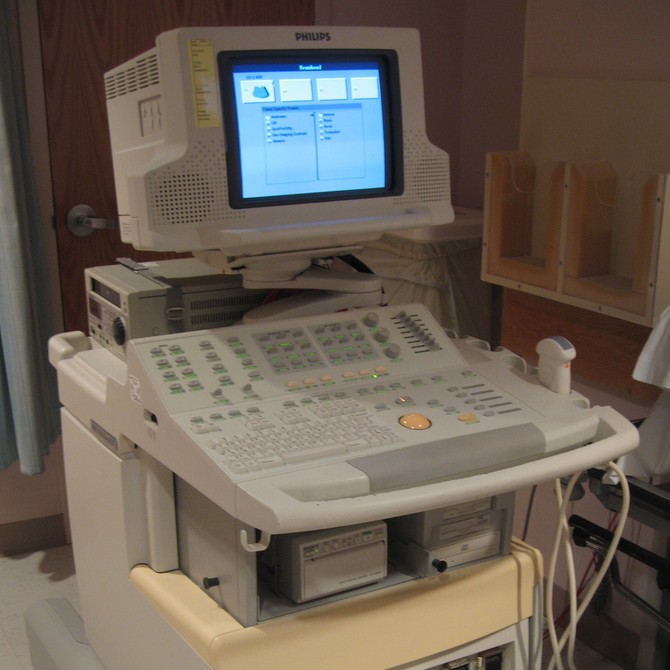Research Update: Pain Medication and the Figure of the Pain Patient
Judy Z. Segal is a Professor of English at University of British Columbia and has published numerous articles and book chapters on medicine studies and the rhetoric[s] of health and medicine. Her monograph, Health and the Rhetoric of Medicine, was published by SIU Press in 2005. A Social Sciences and Humanities Research Council (SSHRC) grant recipient, Dr. Segal is currently studying the relations of public discourse and personal experience in matters of health and illness. This piece on the rhetoric of pain is rooted in that larger project and serves as a research update to her ongoing work.
About two years ago, Canada’s national newspaper, the Globe and Mail, reported that six to eight million Canadians live with chronic pain, that pain conditions cost the health-care system over $6 billion a year, and that medical students get five times less training on pain than veterinarians do (Walton). According to the President of the Canadian Pain Coalition, pain patients are “treated as complainers, malingerers, and drug seekers” (Walton). Clearly, there is some need to rehabilitate the figure of the pain patient in medical and public contexts.
My focus in this project is on the person in pain, and this part of my research began with an interest in returning to an analysis Elaine Scarry proffered in the 1980’s. In “Willow Bark and Red Poppies: Advertising Remedies for Physical Pain,” Scarry noted a difference between pain-medication advertisements for physicians (in particular, the convention of portraying pain graphically for readers who are not actually in pain) and pain-medication ads in the popular press, directed at people in pain, who don’t need much graphic representation at all. Scarry used audience as a way to account for generically different appeals. I wondered if, with changes in advertising platforms and policies, the representation of the pain patient had changed in thirty years or so.1 I discovered that, for the most part, Scarry’s contrast still holds: pain-medication ads in medical journals still typically feature a tormented-looking subject, while, for example, in mass-circulation magazines, a currently-running ad for the pain reliever Excedrin says only, “Relief starts in 30 minutes. Sufferers know how fast that is.”
Scarry’s analysis provides a starting place for an examination of the figure of the pain patient. Pain medication ads are interesting to rhetoricians because they are one means by which the pain patient is represented to him/herself and to others, in professional and public spheres. They are also a means by which suffering is measured and the need for pain medication is calculated.
Pain is inflected with cultural norms, and so it can be experienced differently according to local custom. Within local custom, it can be experienced differently according to, for example, gender, ethnicity, religion, and class. In this piece, I set aside those differences to focus on my more general question about public discourse and personal experience. On the one hand, pain is an event or condition socially negotiated; for the same reason, the pain patient is socially constituted. On the other hand, pain is experienced individually and, in many ways, privately. How does public discourse affect the experience of the person in pain?
Pain as Socially Negotiated and Individually Experienced
That pain is socially negotiated is a fact that pain-medication ads exploit and re-affirm. Pain is, in itself, invisible; it is, in any case, frequently concealed. Pain is not, on its own, contagious; there are no pandemics of pain. That is, outside the bounds of the pain-afflicted body, pain is not threatening, except to the social fabric—and to the economy. In medical discourse and in pain-medication advertisements, the costs of pain to work and to family are proxies for the experience of pain. Medical journal articles on migraine, for example, take up the epidemiology of migraine, expressed not only in number of people affected but also in number of workdays lost and number of dollars correspondingly spent. In some accounts, lost revenue amounts to over $15 billion per year (Kalra and Elliott).
Ads for pain medications, both in professional journals and in public media, are aimed at getting the sufferer back to work—and back in the family picture: sometimes literally. In a recurring ad for the migraine drug Relpax (eletriptan), an un-medicated mom is photographed with dad and two children. She is horizontal and only partially in view; she is under a boulder of pain. A medical-journal ad for the migraine drug Imitrex (sumatriptan) pictures a woman and child and features the refrain, “I’m back!” A direct-to-consumer ad for the same drug features a distraught and disappointing mother, one who apparently has not yet taken her medication.
Relief of a primary pain condition, like migraine, stands apart in the pharmacopeia from relief of irritable bowel syndrome or arthritis or depression, although each of these is painful in its own way. Where pain itself is the problem, and not secondary to another problem, it is rendered in a series of rhetorical indirections. Pain is difficult to express and hard to measure. It is frequently without external signs and only describable in extended prose unsuited to medical contexts.2 For purposes of diagnosis and treatment, prose is often elided, converted into pain-scale numbers and a finite set of qualitative terms (pain, for most patients, is self-reported on a scale from 1 to 10 and describable only by adjectives such as “burning,” “searing,” “throbbing,” or “pounding”). The patient is pain’s only first-hand witness, and self-report has its problems:
The merest schoolgirl, when she falls in love, has Shakespeare or Keats to speak her mind for her, but let a sufferer try to describe a pain in his head to a doctor and language at once runs dry. There is nothing ready made for him. He is forced to coin words himself, and, taking his pain in one hand, and a lump of pure sound in the other . . . so to crush them together that a brand new word in the end drops out. Probably it will be something laughable. (Woolf 6-7)
Virginia Woolf here anticipates Elaine Scarry’s The Body in Pain, at the centre of which is an argument about pain’s inexpressibility.3 Scarry also writes about pain’s characteristic admixture of certainty and doubt. “[T]o have great pain is to have certainty,” she says; “to hear that another person has pain is to have doubt” (7).
Pain is, at least, difficult to express, and much evidence supports Scarry’s claim that other people’s pain can be doubtful.4 Furthermore, the relief of pain can be, for its part, also unspeakable since it may trespass into pleasure and raise the specter of addiction.5 This being the case—that, in matters of pain, the inexpressible meets the unspeakable—what are the means by which we communicate about pain and pain relief at all?
Representations of the Person in Pain
Because Scarry wrote before 1997, when legislation changed in the United States to loosen restrictions on direct-to-consumer advertising for prescription pharmaceuticals, the drug ads she compared in “Willow Bark” were not necessarily for the same products. In my own study, I examined about thirty ads in medical journals and compared them to about thirty in popular magazines—sometimes for non-prescription drugs like Tylenol and Excedrin but sometimes for prescription drugs like Lyrica (pregabalin) for fibromyalgia and neuropathic pain. In the case of each ad I examined, I asked a central rhetorical question, “Who is persuading whom of what, and what are the means of persuasion?” My main concern, however, was not the rhetoric of individual ads so much as the larger rhetoric of representation of the pain patient. So my investigations took me beyond advertisements and into the contexts of public discourse into which those ads are installed.6
Here are three initial findings of my study.
1. In many ads, across venues, lost family time and lost work time are proxies for the experience itself of pain.
While Scarry had noted one kind of ad appeal for physicians and another for pain sufferers, I found a shift for both audiences to appeals focused not on pain itself but on what pain prevents a person from doing. Increasingly, the problem that advertisements are positioned to solve is that pain keeps people from being productive—from being good workers or good partners or good parents. In the discourse of health care, a complaint merits treatment when it interferes with normal function. As a current television ad for non-prescription Tylenol says, Tylenol lets you “get back to normal, whatever your normal is.”7 That is, pharmaceutical ads link pain medications to the normal and to expectable productivity, and they make treatment an obligation of social beings, an imperative for social life. What is interesting here, rhetorically, is not simply the appeal itself (in fact, most medications are advertised according to a hierarchy of social values and obligations8). What is interesting is that pain itself, the personal suffering—that very thing whose inexpressibility was the problem in the first place—has been proxied almost out of existence.9
2. While pain patients are the credible subjects of pain-medication advertising, they are often represented in popular discourse as suspect.
One place to look for the figure of the pain patient is in celebrity illness narratives. People Magazine and other weeklies regularly publish the personal accounts of celebrities who are being rehabilitated after prescription drug abuse. These illness narratives tend to run in the same direction: X was prescribed painkillers following an injury or illness; pain became chronic; X began to self-medicate, to overuse, and . . . now he/she is in rehab. Perhaps for this reason–the narrative conflation of pain, drugs, addiction, and privilege–when a celebrity goes public with a pain condition (as opposed to another health challenge), s/he risks being treated badly in the press. When Cindy McCain was interviewed for People about her migraines (the “secret agony” [McNeil] which had, indeed, led to an addiction to prescription painkillers), some readers of the magazine wrote in supportively, using the highly conventionalized genre, letter in response to a celebrity confession: “I hope Cindy McCain can bring attention to [migraine] and help to its sufferers and I wish her well in her own battle with this misunderstood affliction” (Wolfe). Some people, however, were unmoved by McCain’s illness narrative. In the New Yorker, columnist Lauren Collins, responding to the People Magazine confession, exhibited little sympathy for McCain, quoting her selectively in a way that seemed, more than anything else, to mock her.10 This is the dubious way pain patients are represented in public. What sort of relief might such patients conclude they deserve?
3. In public discourse, the pain patient is sometimes confused/conflated with the drug addict.
Features appear regularly in the media on abuse of prescription painkillers. Lately, the discourse has reached a fever pitch, as Purdue Pharmaceuticals has acknowledged the potential for abuse of its time-release opoid OxyContin and has stopped its manufacture, replacing the drug with OxyNEO. OxyNEO is, like its predecessor, a timed delivery system for the narcotic oxycodone, but the new drug is less susceptible than the old one to the sort of tampering that disables its time-release function, and so it is less susceptible to abuse. While there is panic in the media (e.g., Goldman; Morris) about abuse of prescription narcotics, we find, on series television, characters in two acclaimed, eponymous, programs—House and Nurse Jackie—who get some of their mystique, and some of their rogue appeal, from their use of these very drugs (OxyContin, Percocet, Vicodin).
Mass-media displays of both moral anxiety and moral ambiguity have always been material for water-cooler conversation, or its online equivalent, but here the discussion can turn reflexive. That is, when we take a position on the use of unprescribed prescription drugs, we are, in some cases, taking a position on ourselves: we are, if we think about it, many of us, prescription-drug abusers ourselves. How many drugs do we take, exactly, and on whose authority? Did we really need to finish the bottle of Tylenol 3’s the dentist gave us when we had that root canal? Have we neglected to dispose of the remainder of the morphine we brought home from the hospital after a recent surgery? In the midst of an anxious and ambivalent public discourse on prescription drugs, the pain patient may well wonder not only what to do and what to take but also how to see and judge him/herself.
In medical journals, advertisements for opioids address the question of addiction directly, if sometimes a little too subtly.11 In the absence, however, of advertisements for opioids to patients—for there are no such advertisements—pain patients are left to figure out for themselves the relation of prescription and addiction. They use what meager information is available to them formally. (Post-operative patients are told, for example, “Do not worry about becoming addicted to your pain medication. People only become addicted if they take their pain medicine for reasons other than to control pain” [Vancouver Coastal Health 2]; that is, sadly, false.) Often, they rely for information on support groups and online resources, including web sites sponsored by pharmaceutical companies. Sometimes, what seem like grassroots pain sites, such as Partners Against Pain, the domain name for the site owned by Purdue Pharmaceuticals (http://www.partnersagainstpain.com/), are “Astroturf” sites (Pezullo), animated not by the public but by stealth commercial sponsors. That is, being structurally suspect, pain patients are left, ironically, with nothing but potentially unreliable sources of information.
Conclusion
This piece has explored some of the ways that public discourse on pain represents persons in pain and affects the perception, and self-perception, of the pain patient. It has suggested that the experience of being a pain patient is, in part, an effect of rhetoric, and that rhetorical reform may be one means by which the pain patient can be rescued from the effects of a problematic identity. These are matters I take up in ongoing work on pain discourse and pain patients, and, more generally, on the relation of public discourse and personal experience. That research is focused on the way public values are taken up in individual bodies, on how we become ill in the terms most available for us to become ill in, and on how we see ourselves when we see ourselves reflected through the public gaze.
Endnotes
- Scarry did not anticipate direct-to-consumer advertising for prescription pharmaceuticals: “Prescription drugs themselves will not be the subject of public medical advertising, since the public cannot on its own purchase such drugs” (“Willow Bark” 47). return
- Many say there is no better account of migraine pain than in Joan Didion’s essay, “In Bed.” See also Claire’s Head by Catherine Bush, a novel about two sisters, one of whom has gone unaccountably missing. Migraine is the sisters’ bond. The trail left by the pain (I imagine a bracelet that says, “What would the headache do?”) helps solve the mystery and reunites the sisters. return
- While pain scholars acknowledge Scarry’s contribution to pain studies as significant, some have begun to take a critical look at her claims about pain as inexpressible. A recent paper by Elizabeth Anker is emblematic of this shift in reception. return
- See Craig, Hyde, and Patrick for an example of the literature on “faked” pain. return
- On this topic, see, for example, Derrida. return
- Since I wrote this paper, Meldrum has published an excellent essay on “the [opioid] prescription as stigma.” Her essay is, in many ways, also on the relation of public discourse and personal experience in the realm of pain. return
- See http://qdivisionmusic.com/node/321. return
- See my “What, in Addition to Drugs, Do Pharmaceutical Ads Sell?” return
- A counter-example is worth mentioning: A direct-to-consumer magazine ad for the prescription migraine drug Treximet (sumatriptan + naproxen) features a decapitated woman holding her head in her hands (she’d rather have it off than on), and pain, rather than poor productivity, is the topic of the appeal. return
- Collins writes, “McCain . . . this year participated in a clinical trial to test the effectiveness of Botox in alleviating migraine. ‘You know, they ring your head in it,’ she said. ‘It hurts like the dickens.. But I’ll do anything . . . if it would help me get rid of this.’” This comes after Collins has described McCain as she addressed the American Headache Society: “She was dressed in spectator pumps and a chartreuse piqué suit. Everything about her seemed lemony—tart yellow bob, pursed lips . . . .” (38). Collins makes it hard to take McCain seriously, or see her experiment with Botox as unconnected to any possible cosmetic effect of the treatment. return
- See ad for OxyContin (Purdue Pharmaceuticals) in American Family Physician (June 1, 2008): “Oxycodone can be abused in a manner similar to other opioid antagonists, legal or illicit. This should be considered when prescribing or dispensing OxyContin in situations where the physician or pharmacist is concerned about an increased risk of misuse, abuse, or diversion” (1497). return
Works Cited
- Anker, Elizabeth. “Toward a Phenomenology of Pain.” Modern Languages Association 2012. Seattle, WA. 8 January 2012. Conference presentation.
- Bush, Catherine. Claire’s Head. Toronto: McLelland & Stewart, 2005. Print.
- Collins, Lauren. “Not Tonight Department: Head First.” The New Yorker 21 Sept 2009: 36, 38. Print.
- Craig, Kenneth D., Hyde, Susan A., and Christopher J. Patrick. “Genuine, Suppressed, and Faked Pain Behavior during Exacerbation of Chronic Low Back Pain.” Pain 46 (1991): 161–71. Print.
- Derrida, Jacques. “The Rhetoric of Drugs: An Interview.” Differences 5.1 (1993): 1-25. Print.
- Didion, Joan. “In Bed.” The White Album. New York: Simon & Schuster, 1979. Print.
- Edmeads, John. “The Dark Side of Medication Abuse.” Editorial. Headache 29 (1989): 190-191. Print.
- Goldman, Brian. “Generation Rx: Town Hall.” White Coat, Black Art. Canadian Broadcast Corporation. 5 Dec 2011. Radio broadcast.
- Kalra, Arun A., and Debra Elliott. “Acute migraine: Current Treatment and Emerging Therapies.” Therapeutics and Clinical Risk Management 3.3 (2007): 449-459. Print.
- McNeill, Liz. “Cindy McCain: Her Secret Agony.” People 14 Sept 2009: 147-149. Print.
- Meldrum, Marcia. “The Prescription as Stigma: Opioid Pain Relievers and the Long Walk to the Pharmacy Counter.” In Jeremy Greene and Elizabeth Siegel Watkins, eds., Prescribed: Writing, Filling, Using, and Abusing the Prescription in Modern America. Baltimore, MD: Johns Hopkins University Press, 2012. 184-206. Print.
- Morris, Ethan. “Prescription for Abuse.” KTCS 9 Documentary. PBS. KTCS 9, Seattle. 30 Jan. 2012. Television documentary.
- Pezzullo, Phaedra. “Resisting ‘National Breast Cancer Awareness Month’: The Rhetoric of Counterpublics and their Cultural Performances.” Quarterly Journal of Speech 89 (2003): 345-365. Print.
- Scarry, Elaine. The Body in Pain: The Making and Unmaking of the World. Oxford; New York: Oxford University Press, 1985. Print.
- —. “Willow Bark and Red Poppies: Advertising the Remedies for Physical Pain.” Resisting Representation. New York: Oxford University Press, 1994. 13-48. Print.
- Segal, Judy Z. “What, in Addition to Drugs, Do Pharmaceutical Ads Sell?: The Rhetoric of Pleasure in Direct-to-Consumer Advertising for Prescription Pharmaceuticals.” In Joan Leach and Deborah Dysart-Gale, eds., Rhetorical Questions of Health and Medicine. Lanham, MD: Lexington Books, 2011. 9-32. Print.
- Vancouver Coastal Health. “Laparoscopic Gallbladder Removal (Cholecystectomy): Discharge Instructions.” May 2011. Print.
- Walton, Dawn. “Canadians in Pain Aren’t Seeking Proper Help from Doctors.” GlobeandMail.ca. The Globe and Mail, 12 May 2010. Web.
- Wolfe, Laurel. Letter. People (October 5, 2009): 8. Print.
- Woolf, Virginia. On Being Ill. 1926. Ashfield, MA: Paris Press, 2002. Print.





 Professor Segal teaches rhetorical history and theory and rhetoric of health and medicine at the University of British Columbia. Her recent essays appear in journals such as Written Communication, Journal of Medical Humanities, Journal of Sex Research, and Cephalalgia, and in collections such as Sage Handbook of Rhetorical Studies (Lunsford et al, eds., 2009) and Rhetorical Questions of Health and Medicine (Leach and Dysart-Gale, eds., 2011). In 2011, she was a Visiting Scholar in the Department of Social Studies of Medicine at McGill University.
Professor Segal teaches rhetorical history and theory and rhetoric of health and medicine at the University of British Columbia. Her recent essays appear in journals such as Written Communication, Journal of Medical Humanities, Journal of Sex Research, and Cephalalgia, and in collections such as Sage Handbook of Rhetorical Studies (Lunsford et al, eds., 2009) and Rhetorical Questions of Health and Medicine (Leach and Dysart-Gale, eds., 2011). In 2011, she was a Visiting Scholar in the Department of Social Studies of Medicine at McGill University.